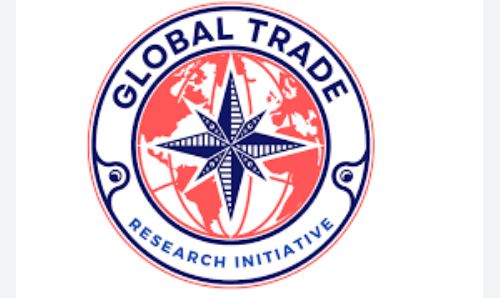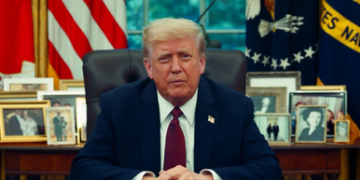New Delhi: The US, despite reporting a USD 44.4 billion trade deficit with India, runs a USD 35-40 billion overall surplus when revenues from education, digital services, financial activities, royalties, and arms trade are factored in, economic think tank GTRI said Monday.
It said for India, this means it has every reason to walk into free trade agreement negotiations with confidence, pushing back hard against inflated deficit claims and demanding fair, balanced terms that reflect the full economic relationship, not just a narrow, cherry-picked slice of the ledger.
In 2024-24, the US has recorded a trade deficit of about USD 44.4 billion with India, which means Washington has imported far more goods and services from India than it exported.
US President Donald Trump has on multiple occasions highlighted this gap, accusing India of unfairly benefiting from trade.
Washington is also using the deficit figures to push India to unilaterally lower tariffs and open its market further, the Global Trade Research Initiative (GTRI) said.
“But this trade deficit narrative is misleading and incomplete,” GTRI Founder Ajay Srivastava said, adding that according to the think tank, the US quietly rakes in USD 80-85 billion every year from India through education, digital services, financial operations, intellectual property royalties, and arms sales.
“These massive earnings do not show up in the narrow goods trade statistics. When you factor them in, the US isn’t running a deficit with India at all – it’s sitting on a USD 35-40 billion surplus,” he said.
He added that there’s no reason for India to hand over sweeping concessions in sectors that have nothing to do with balancing trade, especially when these concessions would only further boost America’s already dominant earnings from the Indian market.
In FY2025, trade between India and the US reached USD 186 billion as per the commerce ministry data. India exported USD 86.5 billion in goods while importing USD 45.3 billion, creating a goods trade surplus of USD 41 billion.
In services, India exported an estimated USD 28.7 billion and imported USD 25.5 billion, adding a USD 3.2 billion surplus. Altogether, India ran a total trade surplus of about USD 44.4 billion with the US.
Explaining further, Srivastava said that one of the biggest US money-makers from India is its higher education sector.
“Indian students studying in the US spend over USD 25 billion every year, about USD 15 billion on tuition and another USD 10 billion on living expenses,” he said, adding that with the average Indian student spending between USD 87,000 and USD 142,000 per year, top universities like USC, NYU, Northeastern, and Purdue are major beneficiaries, making education one of America’s biggest “exports” to India.
Also, the US tech giants like Google, Meta, Amazon, Apple, and Microsoft bring in another USD 15-20 billion a year in sales from India’s booming digital market, the GTRI said.
These revenues come from digital advertisements, cloud services, app stores, software and device sales, and streaming subscriptions, most of which flow straight back to the US, thanks to limited local rules on data and taxation, it added.
American banks and consulting firms earn an estimated USD 10-15 billion in revenue annually from their work in India’s financial sector, advising companies, managing corporate deals, and providing high-end services, it said.
Another major source of US income, it said, comes from Global Capability Centers (GCCs) in Indian tech hubs like Bengaluru and Hyderabad.
While most work is done in India, much of the real economic value is booked in the US as GCCs earn USD 15-20 billion revenue yearly through India operations, the Delhi-based think tank said.
“Further, the American pharma firms earn USD 1.5-2 billion annually through patents, drug licensing, and technology transfer. Auto companies and component suppliers earn USD 0.8-1.2 billion through licensing and technical services,” it said, adding that Hollywood and US streaming platforms contribute another USD 1-1.5 billion through Indian box office sales, subscriptions, and content licensing.
Srivastava added that the US defence sales to India bring in billions more, although exact figures are often confidential.
“As the US pushes India to make one-sided trade concessions, New Delhi should stand firm. The facts are clear – India is not just a passive trade partner but a major contributor to American wealth across education, technology, finance, and defence,” he said.
India can and should negotiate the free trade agreement from a position of strength, rejecting “hollow” deficit arguments and demanding fair, balanced, and reciprocal terms, he said.
PTI






































